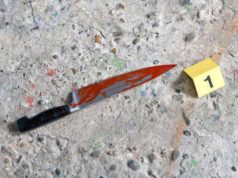
Physical evidence is evidence which takes the form of an actual, physical object. This means that most of the exhibits introduced into a case are likely to be pieces of physical evidence. Documents which attest to the matters of important within the case, or weapons that might have been used in the criminal act involved in the case, or even pieces of clothing which the defendant might have been wearing at the time of the incident in question within the trial might constitute types of physical evidence.
Physical evidence might also include smaller pieces of evidence such as fingerprints taken from the scene of the crime, or residue from the firearm involved in the crime. The use of physical evidence within a trial usually involves analysis of the physical evidence by an expert of some kind, who can then determine, based on that physical evidence, some important conclusion with regard to the trial as a whole.
Physical evidence is differentiated significantly from documentary evidence. Physical evidence is an actual physical object which is important for understanding the situation in contestation, whereas documentary evidence is more removed from the actual case in question.
For example, documentary evidence might include a video taken of a crime, or it might include documentation for a device which speaks to the device’s proper functioning. Physical evidence is thus implicitly involved within the issue in question, somehow. Instead of being documentary evidence and a description of how the device might break, for example, a piece of physical evidence would be the actually broken object.


























